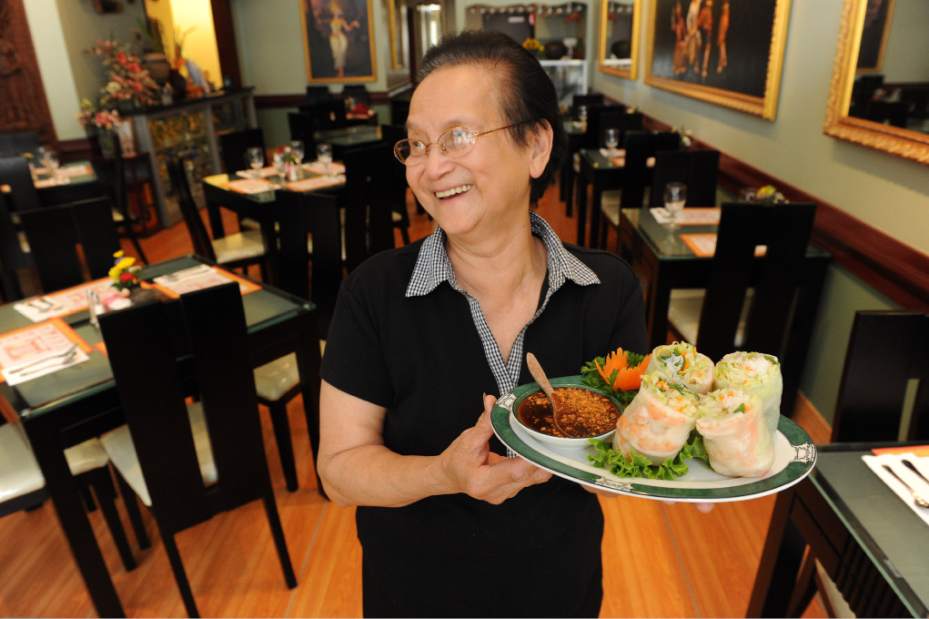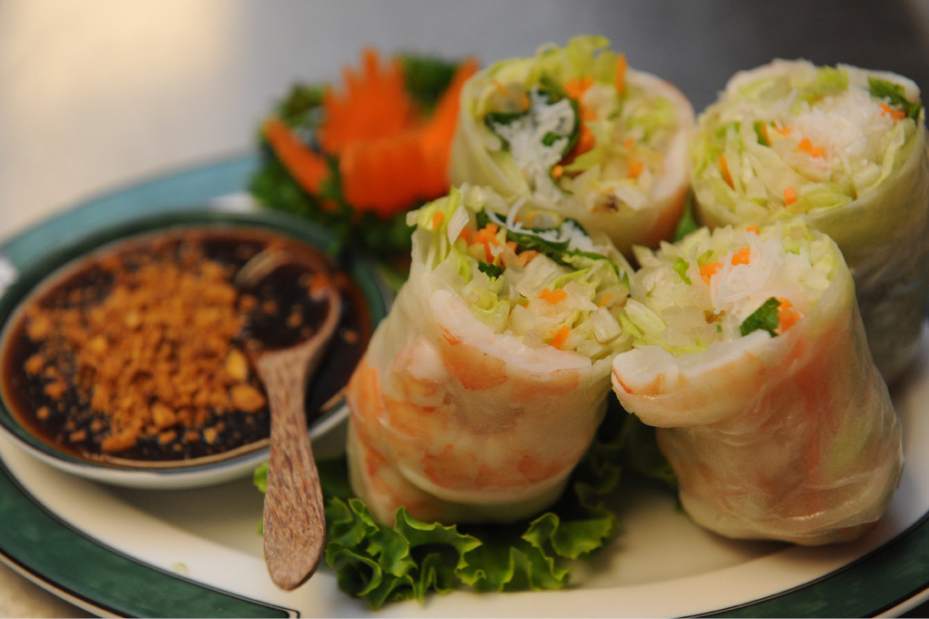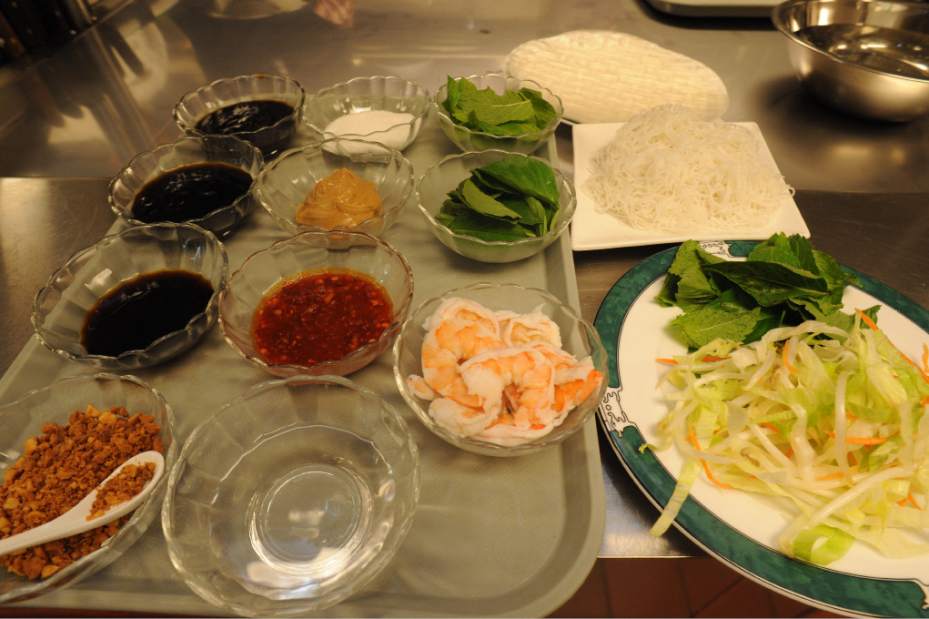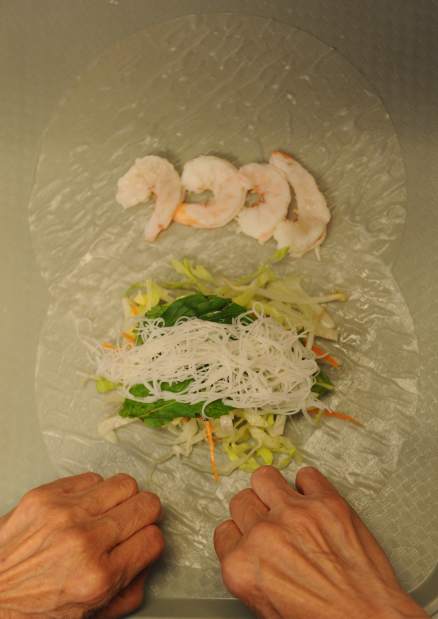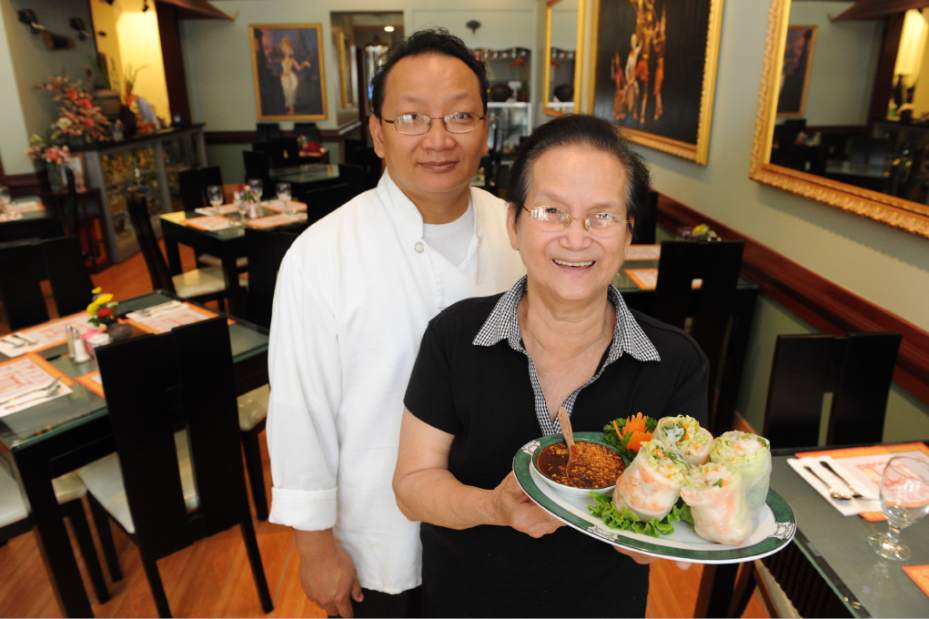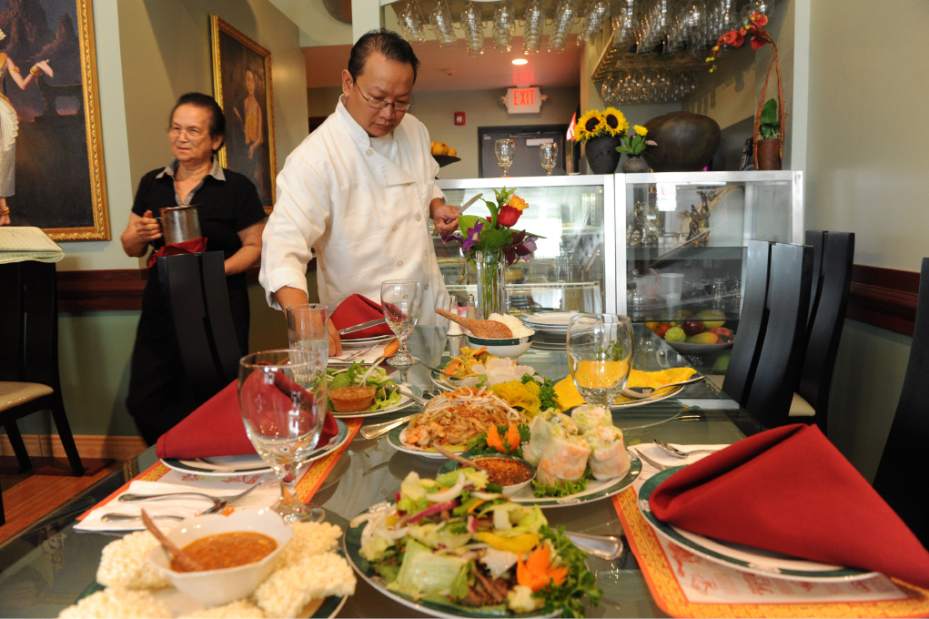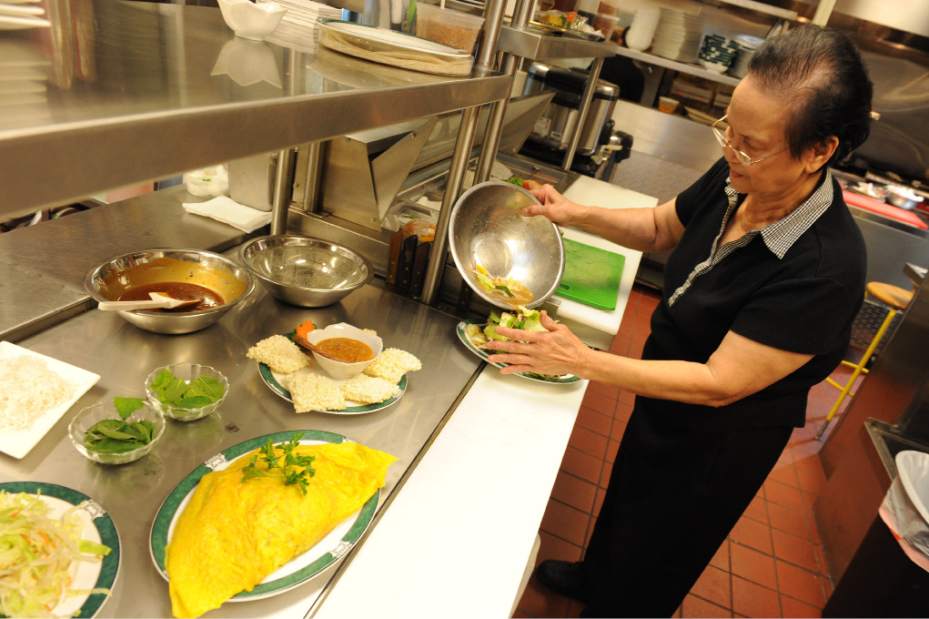Owner overcomes tragic past to find spirit in South Side's Apsara Café
Kim Eng Hong encourages diners to try different dishes and makes sure they are satisfied with the Thai and Cambodian foods her Apsara Café has to offer.
“I always offer food — eat,” says the diminutive Hong, a native of Cambodia who now lives in Hazelwood and is still going strong at age 75.
Hong, former owner of the Lemon Grass Café, Downtown, and her son, Bophanara “Bo” Meng, also of Hazelwood, opened Apsara Café on the South Side in March. Also owners of Angkor in Green Tree, they utilize fresh and flavorful ingredients, including lemon grass, fresh mint and basil, and kaffir lime juice.
Such ingredients give a fresh pop of flavor to menu items such as the Apsara Salad, made with marinated and grilled beef flank steak, for $7.95; Moarn Chha Kroeung, an original Khmer or Cambodian dish with lemon-grass sauce, broccoli and other fresh vegetables, can be made with chicken, beef, pork, shrimp or tofu and ranges in price from $7.95 to $9.95 for lunch and from $10.95 to $13.95 for dinner.
Lot Chha, a Cambodian rice pasta, is stir-fried with fresh bean sprouts, a variety of fresh vegetables and egg, with a light brown sauce. It can be ordered as a vegetarian dish or with chicken, beef, pork or shrimp, for $7.95 to $9.95 for lunch, and $10.95 to $13.95 for dinner.
All lunch entrees include a house lemon-grass or wonton soup and vegetable spring roll.
The Kuteiv Chha, or Pad Thai, also can be ordered with any of the vegetarian, seafood or meat centerpieces and ranges from $7.95 to $9.95 for lunch. The same dish, with various ingredients, costs $10.95 to $13.95 for dinner. Bo Meng's wife, Nitaya Meng, is originally from Thailand; hence, Apsara offers Thai dishes.
“She's an excellent cook, too,” Meng says of his wife.
Apsara desserts are $4.95 each and include delectables such as Golden Threads made of eggs and sugar, Squash Custard and Sweet Rice with Champagne Mango, a particularly sweet variety.
The mother-and-son duo named their newest restaurant for Apsara, a goddess or nymph character in Cambodia's classical traditional dance, as a reference to their native land. To emphasize their heritage further, Hong and Meng hung a large oil painting of classic Cambodian dancers enacting a war scene on one long wall of the restaurant.
Walls are painted a refreshing green, with diners eating from green-rim dishes Hong found on a trip to Vietnam. She found the Asian-style black chairs and tables in China.
Hong's collection of elephants sits on high shelves. Most of the figures have elevated trunks.
“Mom loves elephants,” her son says. “People think elephants give you good luck. With the trunk up, even better luck.”
Hong and her son have had luck in both bad and good measure. In the 1970s, the Khmer Rouge regime came into power in Cambodia and ordered a mass exile of everyone from the capital, Phnom Penh, to the countryside. Hong left the city with her children for a camp. Hong's husband refused to leave and was shot and killed. Six of their seven children, including one adopted child, died of malnutrition in exile; Meng was the only surviving child. Hong lost her brother and grandmother in the takeover.
“The movie ‘The Killing Fields' depicts her whole life story,” her son says. The 1984 British film was about the harsh Khmer Rouge regime and the many sites where mass executions of nearly 1.4 million people took place. Those sites are the “killing fields” of the title. Among the Khmer Rouge targets were those who were not ethnically Cambodian, as well as professionals and intellectuals.
“It's not exactly like the original, but very close,” she says of her life in comparison to the movie.
Her father arrived in Pittsburgh after leaving Cambodia in 1975 to escape the Communists; Hong followed him here in 1981. She worked for the Catholic Diocese of Pittsburgh and later took care of an area family for 17 years. One of Hong's sisters also settled in Pittsburgh, with another sister landing in Maryland. Meng arrived in a refugee camp at age 6, before emigrating here at age 11. He eventually graduated from Central Catholic High School and Thiel College, where he earned a bachelor's degree in business administration.
Meng worked for various restaurants and even managed one after he graduated from Thiel. Later, his uncle, who owns a restaurant in Ambridge, “taught me everything” about the restaurant business, he says. He and his mother opened Lemon Grass in 1997 and sold it last year.
But even through their successes, Hong found it difficult to put her tragic past behind her.
“I had nightmares for twenty-some years,” Hong says. Reluctant to return to Cambodia even decades after the Khmer Rouge were no longer in power, she did so only after a trip to Vietnam. While there, she called her brother's house in Cambodia, only to find out he was in the same city as she. The two reunited, and he persuaded Hong to visit her homeland, saying things had changed dramatically.
Things have changed dramatically for Hong and her son, too.
“Most of my family died of malnutrition,” Meng says. “When we have food, we like to feed people.”
Sandra Fischione Donovan is a contributing writer for Trib Total Media.
Aspara Café Fresh Spring Rolls
The Fresh Spring Rolls at Apsara Café on the South Side have so many bright and tangy ingredients, it's like a burst of spring in your mouth. The ingredients are wrapped in rice paper, which Apsara owner Kim Eng Hong says is very fragile.
She suggests dampening each rice paper in a bowl of warm water, then laying each circle of rice paper to dry on a damp kitchen towel, separated from the others.
“Otherwise, they will stick together, and you won't be able to separate them,” she says.
Hong uses two rice papers for each roll for extra strength. And she cautions not to soak the papers too long, or they will be too soft and fall apart.
“Do not be afraid to wrap tight; it holds better than (if the roll is) loose,” she says. Hong uses two overlapping papers to contain all the ingredients.
But the key ingredient, Hong says, is the sauce.
“Anybody can wrap and roll ingredients. But (making) the sauce is an important job,” she says.
For the sauce:
1⁄2 cup hoisin sauce
1⁄2 cup oyster sauce
1⁄3 cup soy sauce (Hong uses Kikkoman)
1⁄2 cup white vinegar
3 tablespoons creamy peanut butter
3⁄4 cup sugar, plus 1 tablespoon
1⁄8 cup Asian pickled chile paste
Granulated peanuts
Rice papers, two for each roll
For the filling:
Iceberg lettuce, julienned
Shredded carrot
Fresh bean sprouts
Fresh Oriental mint
Fresh Thai basil
Thin, cooked rice noodles
Cooked shrimp, chicken or tofu, heated
To prepare the sauce: In a pot on the stovetop, cook all ingredients, except the peanuts, whisking to incorporate and remove the lumps. After the ingredients are dissolved, cool the sauce and keep in the refrigerator up to a week or more. When ready to use, garnish the sauce with granulated peanuts.
To prepare the rolls: Place two prepared rice papers on a prep surface, overlapping them. Fill each pair of papers with the lettuce, carrots, sprouts and a few leaves each of the mint and basil. Add the noodles and shrimp, chicken or tofu. Tightly roll the rice papers with the fillings inside, wrap into a roll and cut each roll in half. Spoon a bit of the sauce over the cut half of each roll to allow the sauce to penetrate the roll.

